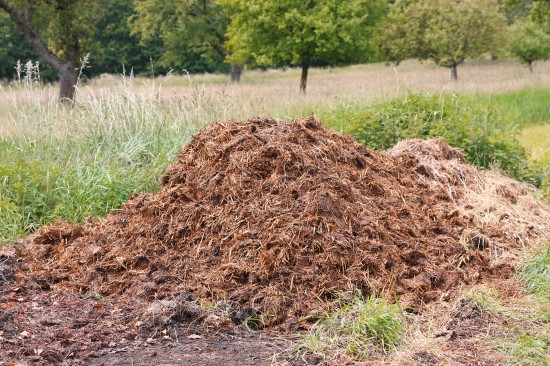
There are numerous poisonous substances that can be fatal to dogs and cats, but accidental poisoning can be avoided in most cases if we remember to keep as many of these substances out of reach of our pets. If you suspect that your dog or cat has been poisoned take a moment to try and retrace their movements to detect what type of poison they were exposed to, and then get the animal to the veterinarian at once. No matter what remedies may be suggested here or from other sources, always take the affected animal to a veterinarian as soon as possible, as this may be the only way to save your pets life.
Food poisoning is probably the most common because dogs are not discriminating in the selection of substances they eat if they find the smell attractive, and if their owners want to give them a 搕reat?in the form of table scraps, leftovers, candy, and drinks, (this is especially true around the holidays). Vomiting and diarrhea are common complaints in the vets office around Thanksgiving and Christmas. The rich food, spoiled leftovers, non digestible bones, candy, and drinks can抰 be tolerated by most pets. Spoiled food contains bacterial toxins produced by salmonella and pets suffering from bacterial toxemia must have veterinary treatment in the form of intravenous fluids and antibiotics just to survive.
Chocolate contains Theo bromine and caffeine which are both toxic to dogs and cats. Baking chocolate contains more of these chemicals than milk chocolate does, but both forms can be potentially lethal. A small dog can receive a lethal amount in only two or three squares of baking chocolate. Tea and coffee contain the same chemicals, and can also be lethal depending on the amount ingested. Warning signs include excitement, nervousness, muscle spasms, seizures, and increased body temperature. Veterinary treatment is recommended as soon as possible.
Poisonous plants in the home such as amaryllis, asparagus ferns, crown of thorns, ivy plants, and chrysanthemum plants are toxic to dogs and cats. Signs of plant poisoning are vomiting, abdominal pain, tremors, convulsions, and increases respiratory rate. Outdoor plants such as castor beans, daffodils, bittersweet, Indian tobacco, azalea, cherry laurel, hemlock, oleander, and yew are also toxic to pets and will produce the same effects. Only veterinary treatment will be effective.
Chemical poisons can include dish water granules, oven cleaners, furniture polish, toilet bowl cleaner, shoe polishes, floor polishes, bleach, ammonia, detergents, drain openers, kerosene, paint stripper, and paint removers, paint thinners, gasoline, wood preservatives, antifreeze and most other petroleum based products. Most cleaning products will destroy bodily tissues by acid or alkaline burns in the mouth and throat, accompanied by damage to the stomach, intestines and other internal organs. Antifreeze has a sweet taste that dogs and cats will lick. A dog that consumes only a half teaspoonful of antifreeze per pound of its body weight will have severe damage to its nervous system and kidneys. Signs of poisoning by chemicals are loss of coordination, vomiting, collapsing, convulsions, and coma. Veterinary treatment must be started immediately, and do not induce vomiting.
Pesticide poisoning occurs daily due to the extensive use of pesticides used around our homes and business抯. Ant poisons contain organophosphates or carbonates, both are toxic and can cause muscle tremors, nervousness, and convulsions. Snail baits and pellets contain the toxic metaldehyde causing tremors, rapid breathing, convulsions, coma, and death. Emergency veterinary treatment is required for both ant and snail poisons.
Rat and mouse poisons are typically the most lethal of all commercially used pesticides. Toxic chemicals in these poisons include warfain, sodium fluorecetate, strychnine, ANTU, bromethalin, cholecalciferol, phosphorus, red squill, zinc phosphide, and aluminum phosphide. By design, these poisons work in one of three ways, as anticoagulants, causing death by internal and external bleeding, signs include nasal bleeding, vomiting blood, blood in urine, weakness, poor coordination, abdominal pain and rapid breathing.
Poisons that do not contain anticoagulants effect the nervous system, causing hyper excitability, muscle tremors, seizures, and kidney and heart failure. The last group is the phosphorus containing poisons that damage the liver. Early signs are vomiting, bloody diarrhea, abdominal pain and a yellow color to the skip and mouth. Phosphorus poisoning is usually fatal due to the irreversible internal damage done to the animal.
To summarize, learn to recognize the symptoms of poisoning, acute abdominal pain, crying and whimpering, vomiting and retching, panting, curling up in a dark corner, blood in urine, vomiting blood, bloody diarrhea, tremors, excitability, and poor coordination. Take your pet to the Veterinarian immediately as most poisons can be fatal, and little can be done by the owner to neutralize or remove the poisons once the ingestion occurs.
 Can Dogs And Cats Be Vegetarians?
Can Dogs And Cats
Can Dogs And Cats Be Vegetarians?
Can Dogs And Cats
 Rat Terrier - A Relative Newcomer To The Terrier Group
Rat Terrier - A R
Rat Terrier - A Relative Newcomer To The Terrier Group
Rat Terrier - A R
 Pair Bonded Dogs And What This Means
Pair Bonded Dogs
Pair Bonded Dogs And What This Means
Pair Bonded Dogs
 Nova Scotia Duck Tolling Retriever Hereditary Health And Health Testing
Nova Scotia Duck
Nova Scotia Duck Tolling Retriever Hereditary Health And Health Testing
Nova Scotia Duck
 Horse Manure The Smelly Truth - How The Law On Waste Could Get You In A Heap Of Trouble
Horse Manure The
Horse Manure The Smelly Truth - How The Law On Waste Could Get You In A Heap Of Trouble
Horse Manure The
Copyright © 2005-2016 Pet Information All Rights Reserved
Contact us: www162date@outlook.com